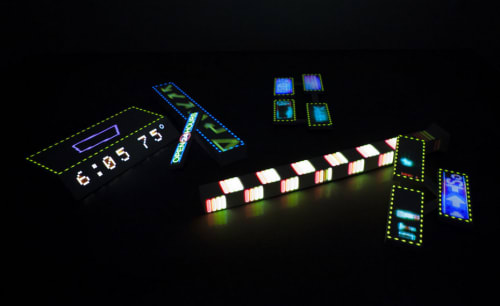"Art is the lie that tells the truth" - Pablo Picasso
M+B and François Ghebaly Gallery are pleased to announce The New Verisimilitude, a two-part group exhibition across both gallery spaces, curated by François Ghebaly. This exhibition explores new approaches to realism in the contemporary practices of ten artists working in different mediums (painting, sculpture, video, and performance), with each work manifesting a different approach to verisimilitude.
Italian historian Bartolommeo Fazio first formally described verisimilitude, the appearance of truth, in a discussion of a Jan Van Eyck painting in the fifteenth century. In a description of a triptych by Van Eyck, the Genoese humanist noted an Angel Gabriel with “hair surpassing reality” and a donor lacking “only a voice.” Since this first contextualization, verisimilitude has been closely associated with aesthetic representation, and the very idea of verisimilitude in art has evolved alongside technology: first defined through painting and live performance, then through photography and cinema, and now through recent developments in CGI and virtual reality.
For over thirty years, Daniel Douke has created meticulously crafted paintings that push the boundary between image and object. In his re-creation of boxes and packaging materials, Douke is pushing his masterful painting technique towards an illusion that takes the form of a three-dimensional object, which once the artifice revealed, cleverly comments on pop art and minimalism.
Dan Finsel’s videos, objects and installations exist as documents of a centrally performative practice. His work chronicles the narrative and psychological motives of a fictional but often unstable character—Dan Finsel—whose subjectivity is constructed from a displaced perversion of Finsel’s “authentic” self. Taking from Lee Strasberg’s method acting techniques, Finsel immerses himself in the psychological trauma of this performed identity and attempts to destabilize/disrupt the relationship between the construction of the subject and the subject as production/performance.
Inspired by the neon signs and billboards of Las Vegas where he was born and raised, Cayetano Ferrer investigates the continual change and growth of the city in his own art practice. In Roadside Monument (2011), Ferrer recreates various computer-generated commercial signage, those familiar blinking signs that the average American sees hundreds of times a day. These signs invite the viewer to enter his site-specific sculptural video installation, which in return questions the unknown and the improbable, challenging the verisimilitude that allowed entry to his work in the first place.
Argentinean artist Victoria Gitman’s small and highly detailed oils on wood depict vintage fashion artifacts that the artist collects from thrift stores. Using a technique reminiscent of the works of the Dutch masters and working directly with the actual object rather than a photograph, her subjects levitate from a minimal background, giving them a radiating presence.
Karl Haendel’s photorealistic graphite drawings reproduce images culled from the world of mass media and everyday objects, playing with notions of authenticity and truth. Haendel’s installations of overlapping and seemingly unrelated subjects create a new narrative and invite the viewer into a radical social commentary on American culture.
Using actors as a material, David Levine is interested in the idea of acting techniques as a means of knowledge and experience-acquisition, often putting actors in unorthodox situation. Combining elements of endurance art, performance art and theater, Levine’s performances and installations question our fascination with actors and the hopelessness of their efforts to fully become someone else.
Isaac Resnikoff’s hand-carved wood sculptures are the result of countless hours of a methodic and precise process. Using this ancient technique, the artist creates large and ambitious reproductions of real life objects that forces the viewer to modify his behavior and to rediscover the surrounding architecture and meanings presented under a new perspective.
In Peter Rostovsky’s practice, images are mined from a wide array of media—including film, video or photographs—from which still images can be captured. Rostovsky sees these single frames as the most concise and expressive increment of our mediated lives. His photo-realistic paintings and sculptures show an interest in the ephemeral quality of painting and make visible the constantly shifting balance between the power of transmitting and receiving information.
Robert Russell explores the existentialism of the painter through a rigorous daily painting practice. His work questions, like Richter or Tuymans, the relationship between painting as a primary hands-on means of producing images and all the medium’s technically assisted derivatives. The metaphysical concern of this major issue is subtly raised through his gentle painting touch, and his work functions as homage and criticism to the medium.
Yoshihiro Suda is a Japanese contemporary artist known for his hyper-realistic sculptures of plants and flowers created in the tradition of Japanese woodcarving. In his installations, he strategically places his small sculptures—which might be in the form of perfectly rendered clumps of weeds or a single rose—in unexpected places, such as a crack on a wall or a window frame.
